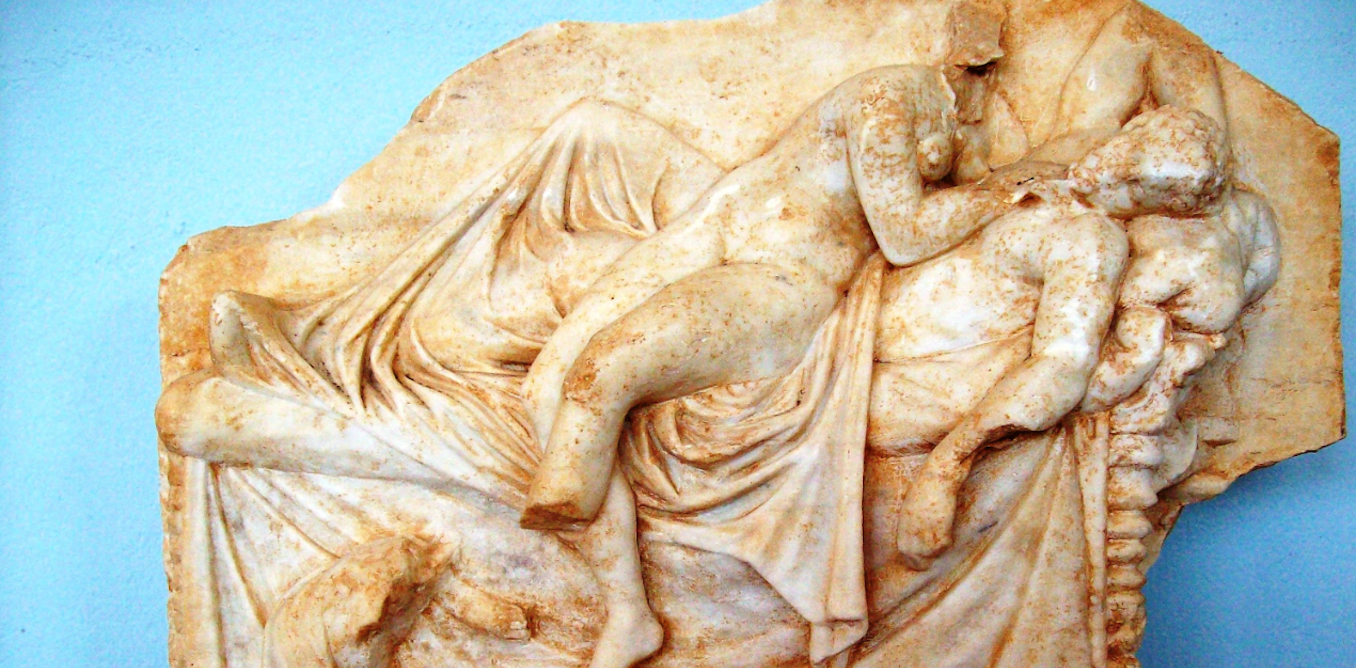Delphine von Schauroth (1813–1887) was spectacularly famous in the early 19th century.
The German virtuoso pianist and composer was hailed as a musical genius by critics for her powerful and inventive performances and her original and deeply expressive compositions.
Why, then, is she nearly forgotten today? Despite her genius status in her day, her family life and class status may account for some of her contemporary obscurity.
Child prodigy
The nine-year-old Schauroth began her performance career as a pianist in Germany in 1822. Soon after, she toured England and France, where she dazzled crowds and connoisseurs alike.
Respected critics wrote rapturously about her music. Poets composed verses about her brilliance. Artists commemorated her with portraits.
A plaster cast of her face was made in order to study the phenomenon of musical prodigies by Edinburgh phrenologists — scientists who believed that the skull’s shape could reveal an individual’s character and intellectual abilities. While phrenology was influential at the time, it has since been discredited and denounced for how it was used to reinforce racist hierarchies.
Read more:
‘We need each other’: Black classical musicians are building supportive communities
Known ‘greats’ compared to her
In reviews from this time, Schauroth was acknowledged as one of the greatest young pianists alongside figures who are more familiar today, such as Franz Liszt and Felix Mendelssohn. In fact, she was so renowned and admired that Liszt was sometimes compared to her.
Perhaps the most amusing and succinct assessment of her abilities, though, was by the French novelist and music critic Stendhal. The writer commented in a letter to a friend that the young Schauroth had “a big head like Mozart.” This was a striking comparison to one of the greatest child prodigies and musical geniuses, even if it was not worded in the most flattering way.
Metaphors of magic, sorcery
As Schauroth outgrew the label of child prodigy (or Wunderkind) in the late 1820s and 1830s, her reputation as an artist deepened. Critics were so struck by her musical powers that they often resorted to metaphors of magic and sorcery to describe the effect her music had on audiences.
This magical imagery may have also been related to her gender. In the 19th century, musical culture was still grappling with women as creators and composers, even though there had been many respected female composers before this time.
It may have been that understanding a woman as a sort of sorceress — even if only figuratively — made as much sense as understanding her as a creative artist.
Read more:
Why we are fascinated by the Oscar-nominated ‘Tár,’ a story of rare female power in classical music
The brilliant composer
Schauroth was not a prolific composer, but her compositions made a strong impact. She published at least three works for piano: Sonate brilliante, a caprice in B flat minor (unfortunately lost) and Six Songs Without Words, Op. 18. The opus number of the latter collection suggests that she composed at least 18 works, but we can’t be certain about this.
When Schauroth published her Sonate brilliante in 1834, she became one of the few women to publish a piano sonata in the early 19th century. At this time, composing a piano sonata was considered a serious and challenging task. Composers needed a thorough mastery of form and harmony to write a sonata. In addition, the compositional achievements of Beethoven, Schubert and Mozart loomed intimidatingly over the genre.
(Amanda Lalonde), Author provided (no reuse)
Women composers were usually expected to confine themselves to small-scale works, such as songs and short piano pieces. In this context, Schauroth’s choice to publish a piano sonata showed her serious ambition as a composer and her resistance to gendered expectations.
Critics, including the composer Robert Schumann, commented on the fiery, virtuosic, expressive and improvisatory style of Schauroth’s sonata. They also commended her for her ambition and noted her innovative approach to the genre.
Concealed composition
A small number of Schauroth’s compositions have survived in letters and musical keepsake albums that were mementos among friends. Her musical writing even appears in works by other composers.
For example, she traded short piano pieces with her contemporary Felix Mendelssohn, possibly encoding their brief flirtation into musical notes. Intriguingly, she also contributed an anonymous passage of music to Mendelssohn’s Piano Concerto No. 1 in G minor, which he characterized as “ring[ing] out powerfully.”
Resurfacing legacy
Given her reputation in the 19th century, why is Schauroth so forgotten today?

(Shutterstock)
Many of the 19th-century women composers who are well known today, such as Clara Schumann and Fanny Mendelssohn Hensel, came from musical families. They also had children who contributed to their memorialization. Schauroth, in contrast, had an unstable family life (she was married three times) and her only child died young.
Schauroth was also a baroness. While noble status came with advantages, it was also considered inappropriate for adult noblewomen to perform professionally. Schauroth’s performance career all but ended with her first marriage, though she struggled against these limitations. Without a long public presence, she faded sooner from memory.
Recently, pianist Arcadie Triboi released a recording of Schauroth’s music, finally allowing listeners to hear a substantial collection of her compositions.
As scholars, performers and broadcasters increasingly showcase a broader array of composers, Schauroth may be celebrated once again.

The post “When a child prodigy composer matured into a noblewoman, her legacy got complicated” by Amanda Lalonde, Associate Professor of Musicology, University of Saskatchewan was published on 09/17/2024 by theconversation.com






































Leave a Reply